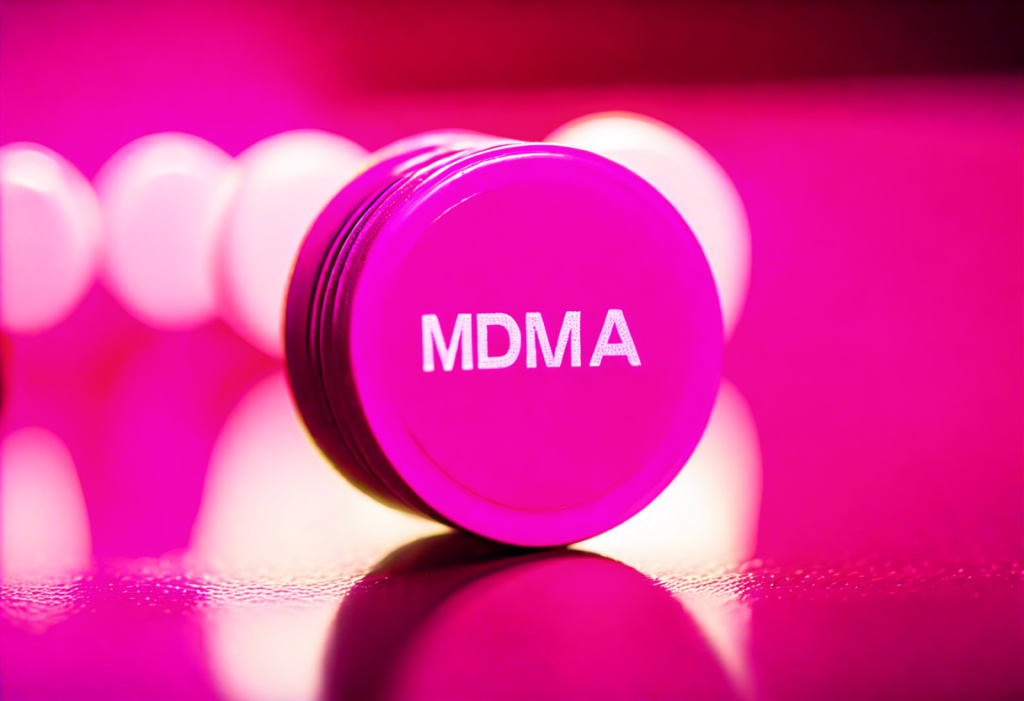The Molly Mystery: Understanding the Aftereffects
Molly, also known as MDMA or ecstasy, is a popular recreational drug known for its euphoric and empathogenic effects. It gained significant popularity among party-goers and club enthusiasts due to its ability to enhance mood, increase sociability, and create a sense of emotional intimacy with others. However, despite its initial positive effects, the use of Molly can have long-lasting aftereffects that can haunt users for days after ingestion.
One of the most common aftereffects of Molly use is the physical side effects. These often include muscle tension, jaw clenching, and increased heart rate. Frisky and energetic behavior during the drug’s effect can lead to dehydration and overheating, causing users to experience excessive sweating, dry mouth, and blurred vision. These physical symptoms can persist for several days, leaving individuals feeling fatigued, weak, and generally unwell.
In addition to physical side effects, the psychological impacts of Molly can be profound. The drug primarily works by increasing the release of serotonin, a neurotransmitter responsible for regulating mood and emotions. While the immediate effects may include feelings of euphoria and emotional openness, the subsequent serotonin depletion can lead to a significant emotional crash. Users may experience feelings of depression, anxiety, irritability, and difficulty concentrating in the days following Molly use.
It is essential to understand that the duration of Molly’s aftereffects can vary from person to person. Factors such as dosage, frequency of use, and individual physiology play significant roles in determining how long these effects may last. Some individuals might experience a shorter comedown period, while others may find themselves dealing with the aftereffects for several days.
To navigate the Molly hangover and cope with the aftereffects, there are several strategies individuals can employ. Prioritizing self-care by getting sufficient sleep, eating a healthy diet, and staying hydrated can help restore the body’s balance. Engaging in light physical exercise can also aid in alleviating muscle tension and promoting the release of endorphins, which can improve mood. Additionally, participating in activities that promote relaxation and stress reduction, such as meditation or yoga, can provide mental and emotional relief.
The Molly mystery extends beyond its immediate effects. Understanding the aftereffects of Molly use is crucial for individuals who choose to engage in its consumption. Being aware of the potential physical and psychological impacts and having strategies in place to cope with the aftermath can help users navigate this enigmatic drug’s potential hauntings for several days after ingestion.
The Molly Mystery: Common Physical Side Effects of Molly Use
Molly, also known as MDMA or ecstasy, is a synthetic psychoactive drug that alters mood and perception. While it is commonly used for recreational purposes due to its euphoric effects, it is important to understand the potential physical side effects that can accompany its use. Although these effects can vary from person to person, there are some common physical side effects associated with Molly use.
One of the most prominent physical side effects of using Molly is increased heart rate. The drug stimulates the release of neurotransmitters, such as dopamine and serotonin, which can result in an increased heart rate. This heightened cardiac activity can lead to palpitations and an irregular heartbeat, especially if Molly is used in excessive amounts or combined with other substances.
In addition to an increased heart rate, Molly can also cause a rise in body temperature. The drug affects the body’s ability to regulate temperature, leading to a potentially dangerous condition known as hyperthermia. Hyperthermia can result in muscle breakdown, kidney failure, and even death in severe cases. It is crucial to stay hydrated and seek medical attention if experiencing symptoms of hyperthermia while using Molly.
Another physical side effect of Molly use is jaw clenching and teeth grinding, also known as bruxism. The drug stimulates the release of serotonin, which can cause involuntary muscle tension, particularly in the jaw. This side effect can result in jaw pain, tooth damage, and even temporomandibular joint (TMJ) disorders with prolonged use.
Molly can also have gastrointestinal effects, such as nausea, vomiting, and loss of appetite. These side effects can be particularly distressing during and after using the drug. It is important to maintain proper nutrition and hydration to minimize these symptoms.
The comedown or the “crash” is another physical side effect that can occur after Molly use. As the drug’s effects wear off, individuals may experience fatigue, depression, and a general feeling of unease. This can last for several days and may be accompanied by a lack of motivation and difficulty concentrating.
Molly use can have various physical side effects that can vary from person to person. These can include increased heart rate, elevated body temperature, jaw clenching, gastrointestinal distress, and the comedown. It is essential to be aware of these potential effects and take necessary precautions, such as staying hydrated and seeking medical attention if needed. Understanding the physical side effects can help individuals make informed decisions about the use of Molly and prioritize their well-being.
The Molly Mystery: Can It Haunt You Days After?
Molly, also known as MDMA or ecstasy, is a recreational drug that has gained popularity among party-goers and individuals seeking heightened sensations. While Molly can provide temporary feelings of euphoria and increased sociability, it is essential to consider its potential psychological impacts and how long these effects can linger in one’s system.
Firstly, it is crucial to understand that Molly primarily affects the brain’s chemistry by increasing the levels of certain neurotransmitters like serotonin and dopamine. This surge in neurotransmitter activity can lead to a range of psychological aftereffects, some of which may persist after the drug has left the body.
One of the most common psychological impacts of Molly is the so-called “Molly blues” or post-Molly depression. As the drug’s effects wear off, individuals may experience feelings of sadness, irritability, and general emotional instability. This state of low mood can last for several days to weeks and may be accompanied by fatigue and difficulty in concentrating.
Furthermore, Molly’s impact on memory and cognition should not be overlooked. Some users report experiencing memory lapses and difficulties with attention and focus after using the drug. These cognitive impairments can persist beyond the immediate effects of the drug and may take time to fully resolve.
Additionally, Molly can also trigger anxiety and panic attacks in susceptible individuals. The drug’s stimulating properties combined with heightened emotional reactivity can lead to overwhelming feelings of fear and distress. It is important to note that these anxiety symptoms can manifest even days after using Molly, adding to the overall discomfort experienced by some users.
While the exact duration of Molly’s psychological effects can vary among individuals, it is generally agreed upon that they can persist for days or even weeks. Factors such as the dosage consumed, individual metabolism, and frequency of use can influence the lingering psychological impact of the drug.
To cope with the aftermath of Molly use, it is advisable to engage in self-care practices that promote physical and mental well-being. Regular exercise, sufficient sleep, and maintaining a balanced diet can all contribute to a quicker recovery. Additionally, engaging in relaxing activities such as meditation, deep breathing exercises, or spending time in nature can help alleviate feelings of depression and anxiety.
Molly’s impact on an individual’s psychological state can extend well beyond the immediate effects of the drug. Post-Molly depression, cognitive impairments, and anxiety symptoms can persist for days or even weeks after use. It is essential to approach Molly use responsibly, understanding the potential risks and taking necessary steps to mitigate any negative aftereffects.
The Long-Lasting Effects of Molly: How Long Can It Haunt Your System?
Molly, also known as MDMA, is a popular recreational drug that is known for its euphoric and energizing effects. However, the use of Molly can have long-lasting effects on the body and mind. Many users wonder: how long can Molly haunt your system? Let’s delve into the timeline of Molly’s effects and how it can linger in your body.
After taking Molly, the drug rapidly enters the bloodstream and affects the central nervous system. The initial effects are typically felt within 30 to 45 minutes and can include increased energy, heightened sensory perception, and emotional warmth. These sensations can last for several hours, depending on the dose and purity of the drug.
However, the impact of Molly doesn’t end there. The drug is metabolized in the liver and broken down into various byproducts. The half-life of Molly, which is the time it takes for half of the drug to be eliminated from the body, is approximately 8 to 9 hours. This means that it can take around 24 to 48 hours for Molly to be completely eliminated from your system.
It’s important to note that even after the drug has been cleared from your body, Molly can still have lingering effects. One of the most common long-lasting effects is the "Molly hangover." This is characterized by feelings of fatigue, depression, and irritability that can persist for several days after taking the drug.
The exact duration of the Molly hangover can vary from person to person, but it typically lasts for 2 to 3 days. During this time, individuals may experience a lack of motivation, difficulty concentrating, and a general feeling of unease. These symptoms can be exacerbated if Molly was taken in high doses or in combination with other substances.
Additionally, prolonged and frequent use of Molly can have more severe and lasting effects on the brain. Research has shown that MDMA can cause damage to serotonin-producing nerve cells, which can result in long-term changes in brain chemistry. This can lead to mood disorders, memory problems, and difficulties with cognitive function.
The effects of Molly can extend far beyond the initial high. The drug can linger in the body for up to 48 hours, with the Molly hangover lasting for around 2 to 3 days. Furthermore, frequent use of Molly can have long-term effects on the brain. It’s crucial to be aware of these potential risks and make informed choices when it comes to substance use. Prioritizing mental and physical well-being should always be the utmost concern.
The Molly Mystery: Can It Haunt You Days After?
After a night of partying and indulging in the popular club drug known as Molly, many individuals find themselves facing the phenomenon commonly referred to as the “Molly hangover.” While the acute effects of Molly may subside relatively quickly, it is not uncommon for users to experience lingering side effects that can haunt them for days.
One of the most noticeable physical side effects of Molly use is fatigue. Users often report feeling drained and sluggish in the days following use. This lethargy can be attributed to the exhausting nature of the drug on the body’s systems, as well as the disruption it causes to sleep patterns. Many individuals struggle to get a good night’s sleep after taking Molly, which only exacerbates the fatigue and feelings of exhaustion.
Additionally, Molly can cause dehydration and electrolyte imbalances, resulting in symptoms such as headaches, muscle aches, and nausea. These physical discomforts can linger for days, making it difficult for users to resume their normal daily activities. It is crucial to replenish the body with water and electrolytes during and after Molly use to mitigate these side effects.
The psychological impacts of Molly can also linger long after the initial high has worn off. Users often experience mood swings, depression, and anxiety in the days following use. The euphoric effects of Molly are caused by an increase in serotonin levels in the brain, and once those levels drop back down, users can experience a significant crash. This crash can manifest as heightened emotions, feelings of sadness, and a general sense of unease.
Furthermore, Molly can disrupt the brain’s reward system, making it harder for users to experience pleasure naturally. This can lead to anhedonia, a condition characterized by a lack of interest or pleasure in activities that were once enjoyable. These psychological impacts can persist for days or even weeks, making it challenging for individuals to return to their normal emotional state.
The duration of how long Molly can haunt an individual’s system varies depending on several factors, including the dosage, frequency of use, and individual metabolism. While the acute effects of Molly typically last for several hours, the lingering side effects can persist for several days or even longer in some cases. It is crucial for users to be aware of the potential aftermath of Molly use and take the necessary steps to support their physical and mental well-being.
To navigate the Molly hangover and cope with its lingering effects, individuals are advised to prioritize self-care. This includes getting adequate rest, eating nutritious meals, and engaging in activities that promote relaxation and emotional well-being. It is important to allow the body and mind time to recover and restore balance after the use of Molly.
The Molly mystery can indeed haunt individuals days after use. Physical side effects such as fatigue and dehydration, as well as psychological impacts like mood swings and depression, can linger for an extended period. Understanding these aftereffects and taking appropriate self-care measures can help individuals navigate the Molly hangover and support their overall well-being.
Conclusion
The Molly mystery, with its potent effects on the mind and body, can indeed haunt individuals for days after use. Understanding the aftereffects of Molly is crucial in order to comprehend the potential risks and impacts associated with its consumption.
The physical side effects of Molly use can range from mild to severe. Common physical symptoms include dehydration, increased heart rate, elevated body temperature, and muscle tension. These effects can persist for several days after taking Molly, leaving individuals feeling drained and fatigued.
However, it is the psychological impacts of Molly that truly unravel the enigma surrounding its use. Many users report experiencing intense euphoria, heightened sensory perception, and a feeling of emotional openness while under the influence. However, the "Molly hangover," which can follow the initial high, can include symptoms such as anxiety, depression, irritability, and even paranoia. These psychological side effects can linger for days, contributing to a challenging recovery period.
The length of time Molly can haunt an individual’s system is dependent on various factors, including the dosage, frequency of use, and individual metabolism. After ingestion, Molly is metabolized by the liver and broken down into different compounds that can be detected in bodily fluids and tissues. While the peak effects of Molly may only last several hours, the drug can be detected in urine for up to 4 days and in hair follicles for up to 90 days. These prolonged traces of the drug can contribute to prolonged side effects and recovery time.
Navigating the Molly hangover requires implementing coping strategies to alleviate the physical and psychological symptoms. Staying hydrated, getting plenty of rest, and eating nutritious meals can help replenish the body and support recovery. Engaging in calming activities such as meditation or yoga can help reduce anxiety and promote a sense of well-being. It is also crucial to surround oneself with a supportive network of friends and family during this period, as they can provide emotional support and understanding.
While the Molly mystery may continue to captivate many, it is essential to approach its use with caution and understanding. The physical and psychological aftereffects of Molly can last for days, negatively impacting one’s overall well-being. By being aware of these potential consequences and taking proactive steps to mitigate them, individuals can make informed choices and prioritize their health and happiness.




